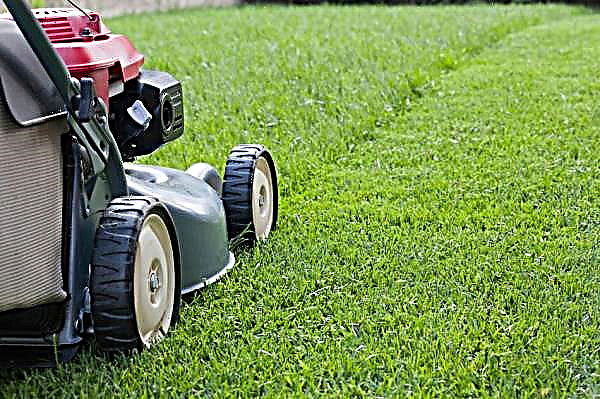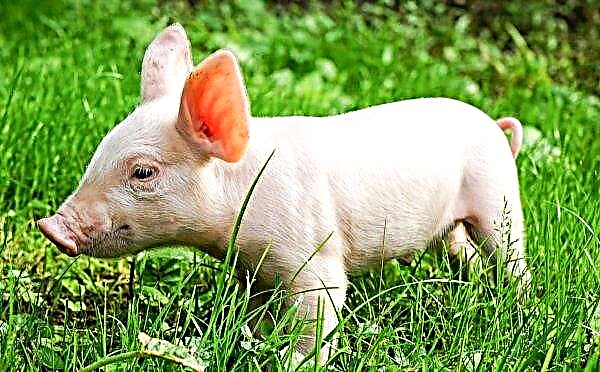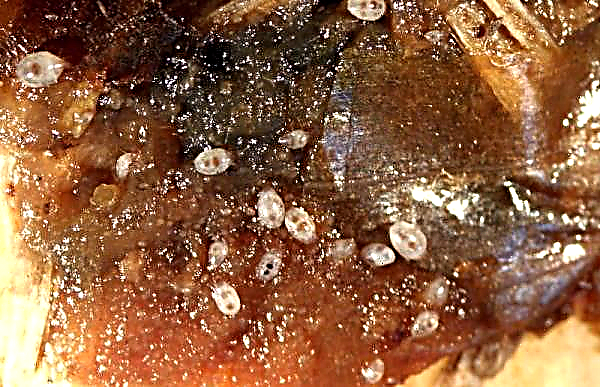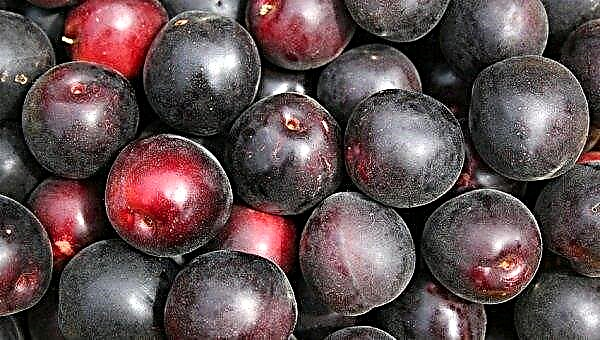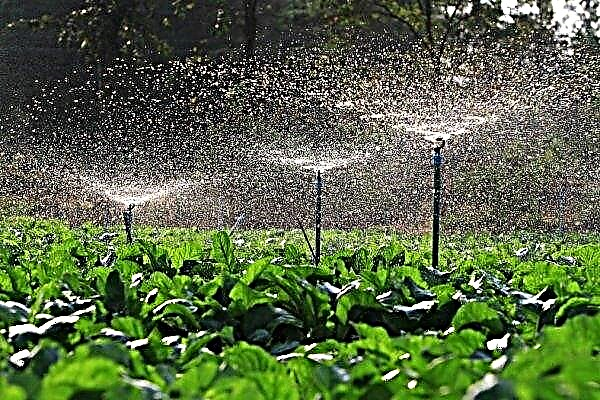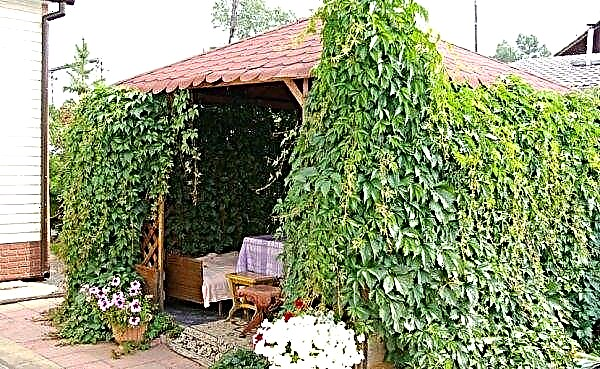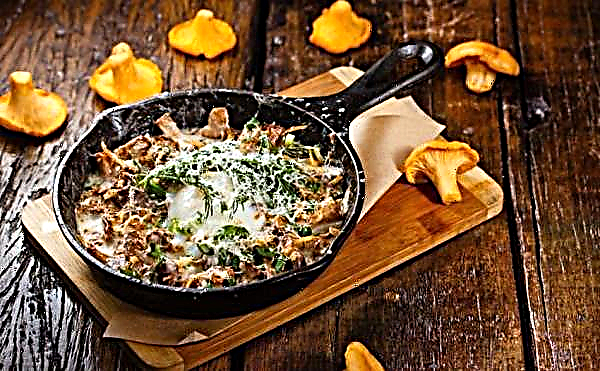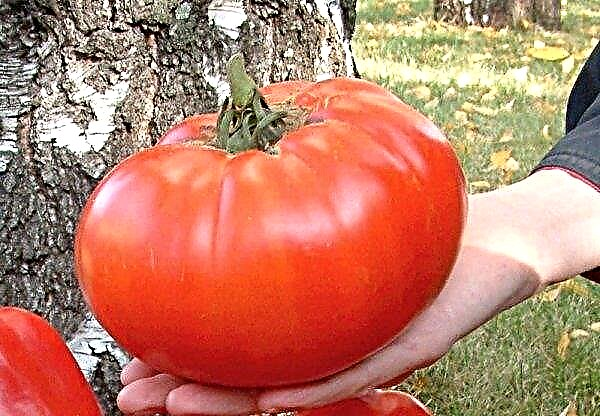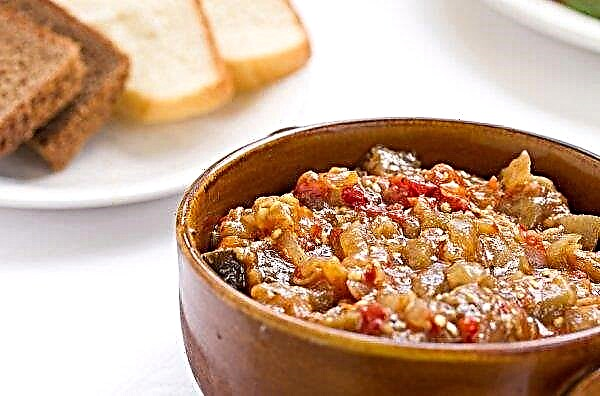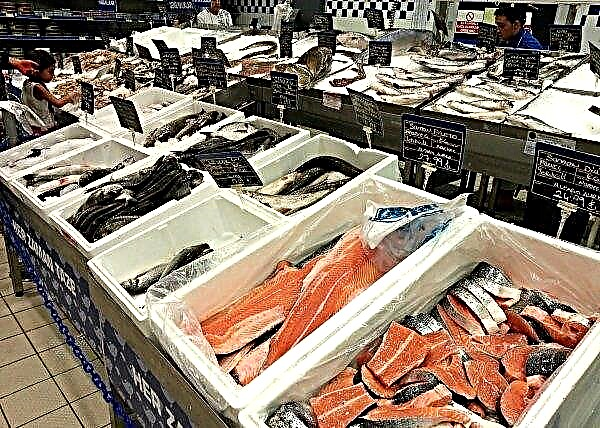Most often, the goal of a “silent hunt” is to collect mushrooms that have a spongy structure in the flesh of a hat. This group includes the birch bark, often found in the forests of our country. The mushroom has an excellent taste and characteristic aroma, and is close to white in terms of food quality. The article provides information about the season when the mushrooms grow, the description of varieties and signs by which the described mushroom can be found in the forest.
Birch trees: description and photo
Leccinum scabrum - this is the name in Latin for the common boletus. This is a spongy mushroom from the Boletovy family, which has many varieties. In various regions of the country, it is found under the names: obabok, grandmother, black-headed and birch. All of them are absolutely edible, but before eating, a person is nevertheless recommended to subject the product to heat treatment (boil, fry).
Did you know? Vegetation and animals, according to biological classification, belong to two different botanical kingdoms, while mushrooms belong to the vast third.
Hat:
- in the initial stage of development - in the form of a hemisphere, after which it gradually acquires similarity with a pillow;
- diameter varies from 7 to 15 cm;
- color can range from grayish beige to dirty brown;
- coating - silky and smooth, pleasant to the touch;
- the flesh of a young boletus is dense, white-creamy, with a pleasant smell, and the old has friable, yellowish flesh.
Gimenofor (located under the hat):
- the young boletus has a cream color;
- becomes grayer as it ages, later on - it crumbles easily.
Leg:
- painted in colors from white to dark gray, with black spots;
- in young birch trees it forms in the form of a club, as it grows, it becomes cylindrical (thicker at the surface of the soil);
- not thick, in diameter from 1 to 3 cm;
- height from 10 to 20 cm;
- has a characteristic scaly surface (black, dark gray, brown);
- inside it has a dense, fibrous, white pulp with a mushroom aroma that does not change color at the cut site.
Types of boletus
Under the birch trees they call a large detachment of mushrooms belonging to the genus Leccinum, growing under various conditions, and therefore slightly outwardly different from each other. Mushroom pickers should know the characteristics of all varieties in order to be able to correctly identify them in the forest.
Marsh birch bark or white, in Latin - L. holopus
The name corresponds to the locality. Marshland has significant differences from other birch trees. His hat is small or medium, not more than 10 cm across. In young fruiting bodies, it is externally convex; upon reaching maturity, it acquires a flat outline. It is covered with a smooth (sometimes skukozhennoy) skin, has a color uncharacteristic for obabka (white-beige, mouse with an admixture of blue or green). The pulp is snow-white, with a slight shade of greenery, watery, it does not darken on the fault.
The leg of the white skin is not thicker than 3 cm, has a height of 5-15 cm, whitish or gray, with a scaly coating. At the base of the swamp, the flesh is bluish-green. When the mushroom ages and dries, the scaly coating becomes much darker, and it is better not to take such a mushroom in the basket.
Harsh birch, in Latin - L. duriusculum
This chalice rarely has a hat with a diameter of more than 15 cm. In a young fungus, it is formed in the form of a clear hemisphere, later acquiring a convex, cushion-shaped outline from below. In the young instance, the hat cover is silky or slightly suede, later becomes smooth, in the rain - slippery. Hat color is directly dependent on the composition of the soil and the degree of illumination, ranging from pale beige, sometimes having shades of lilac, to red, brown or brick. The strong whitish flesh of L. duriusculum turns red at the break, the mushroom aroma is rather weak. [Img hint = Stiff hulk] id: 125252 [/ img]
Under the hat, the porous layer is initially light, white-cream, and becomes dirty yellow or gray as it ages. When pressed, the fingers of a person leave dark traces. Harsh has a smooth cylindrical leg, very rarely thinning up, with a scaly brown coating in the form of a mesh, from under which the main color is visible. The pulp in this place is much denser and harder than in the hat, closer to the soil it changes its light color to green-yellow.
Did you know? It’s just enough to taste to distinguish edible spongy mushroom from inedible mushroom. To do this, it is enough to lick the flesh in the fracture of the hat. If bitterness appears on the tongue, it should not be eaten.
Hornbeam or gray boletus, in Latin - L. carpini
The species has the greatest similarity with an ordinary boletus. A hat is a clearly defined hemisphere, a little later acquiring a cushion, having 8-14 cm in diameter, with an edge slightly bent inward, straightening out after 6-8 days. Coating to the touch is plush, dry, having a finely grained structure and brownish-gray color, significantly darkening under the influence of moisture (dew, rain). The pulp is soft, after full ripening it becomes tougher, at the break it acquires a pink color, after a while it darkens almost to purple.
A thin cylindrical pedicle rarely exceeds a diameter of 4 cm, has a length of 5–13 cm, and at the point of contact with the soil it often thickens to the outline of a mace. Her color is unevenly distributed, changing from top to bottom - from dirty white to brown. The hornbeam leg has a whitish scaly surface that changes color over time to yellow or brown. The structure is fibrous, when pressed, pink remains, a little later - purple spots.
The tubular part of the fruit body is not too dense, watery, white or gray-beige, it is easily separated from the mushroom pulp, when the legs are separated, a recess remains at the connector.Black boletus, in Latin - L. scabrum.
This type of birch bark has a small, no more than 90 mm in diameter, dark brown or almost black hat. Its coating, as the fungus ages, cracks, while subcutaneous tissues are partially exposed. A neat white leg in the form of an oblong cylinder is strewn with dark growths. The fruiting body is grayish-brown, the inner flesh is light, and in the place of tissue damage they almost immediately acquire a purple color.

A pinkish birch, in Latin - L. roseofractum
It can be identified by a wide hat (about 15 cm across), which has the classical shape of a regular hemisphere, and after maturation, the spores gradually become similar to a pillow. It can be covered with dry (to the touch) gray-brown skin or have a pink-brown, dark color. The inner fabric is elastic and dense, snow-white, at the fracture changing color to pink.
Young mushrooms have a pear-shaped leg, but at any age it is not thick, elongated-cylindrical, sometimes bent in one or more places, scaly-white, changing color to almost black in aging grandmothers. The tubular fruiting body is initially bright, but at the same time as the maturation, the spore becomes dirty gray.
The difference between boletus and boletus
There are mushrooms very similar to boletus, and these are boletus. They are united by belonging to the same genus, some external resemblance, the absence of toxic substances in the pulp, similar processing and preparation technology. Boletus can also be found in birch forests, as it is capable of forming mycorrhiza equivalent to both coniferous and deciduous trees.
He has an orange, yellow or reddish-brown hat, which is different from a birch-tree, the main colors of which are mixed with all shades of gray. But the method of distinction in the color scheme of hat coloring is also quite arbitrary, since some varieties of both mushrooms have the same color (for example, black-headed marsh (Leccinum holopus) and white boletus (Leccinum percandidum).Important! One of the most important rules of the mushroom picker is that at the slightest doubt about the edibility, the mushroom is simply “not taken” to the basket, passing by.

At the slightest damage, the legs of the boletus are immediately covered with black-violet “bruises”, and in the case of the boletus boletus, the spots appear, they initially turn pink, and only then darken.
The boletus has a denser pulp, therefore, in the scale of values of mushroom pickers, it stands above the obabka. During cooking, its flesh decreases slightly in volume and becomes even more dense. Since almost all spongy mushrooms are edible and have excellent nutritional qualities, most mushroom pickers gladly take both boletus and boletus.What time do boletus grow
Boletus grow in different climates, so they can be found in European and Asian countries, as well as in America. These mushrooms are common even in the Far North, in the tundra. Groups of deciduous trees, or a mixed, not dense forest in which birches grow, are preferred as a growth medium. Mycologists have noticed that the most frequent chamois are found in birch groves, “diluted” with coniferous trees. These mushrooms form a symbiotic relationship with young tree roots.
The mushroom picker is ready to bear fruit already in July and, under favorable conditions, develops consistently until late autumn. In the warm rainy summer, the first lonely specimens come across from the end of June. One of the characteristic features of a black-headed or obabek is friendly development and massive growth. Mycelium simultaneously grows many fruiting bodies, without losing the intensity of germination after the first wave of the crop.
Important! It should be borne in mind that for no apparent reason the boletus boletus mycelium may stop increasing the above-ground crop, but after a long “rest” it will again return to mass fruiting.
How does rain affect fungal growth
It is well known that the fruiting bodies of mushrooms develop well in damp, but this factor only acts in combination with warm weather. If the air temperature is low, then the presence of moisture does not contribute to the rapid growth and development of mycelium.
Each mushroom has an underground part - mycelium, which continues to grow not only in the summer, but throughout the year. Neither prolonged drought nor frost of the winter months interferes with this. But in order to develop multiple fruiting bodies, you need a moderate plus air temperature and plenty of water. But pickers still should not go the day after a good rain into the forest with a basket, since during this time the mushrooms will not have time to grow. Within 24 hours, the boletus grows by 1-3 cm, for full development it will take from 4 to 5 days.
Did you know? The spongy bodies of the fungi easily absorb various toxins and heavy metals. Therefore, do not collect them near busy motorways or near metallurgical enterprises.
The most comfortable temperature for the growth of the fruiting bodies of the mycelium ranges from +10 ... + 24 ° C, so you should not hope for a successful result of a forest trip in cold or too hot weather.
Where and how to find boletus
To find the habitat, the mushroom picker should examine birch groves or forest areas interspersed with these trees. Darkened, densely overgrown with bushes places can be left without attention, since this variety grows only in well-lit areas. Sometimes lonely birch trees can be found on the forest edges, but mass gathering is possible only in the depths of the forest in sunny meadows.
Young, small mushrooms can be covered with a layer of fallen leaves, and look on the soil surface as a characteristic "tubercle". In order not to bend over yet again, checking for the presence of chippings under the plant litter, it is advisable for the mushroom picker to arm himself with a long staff constructed from a dry branch.
The blackhead is cut off from the ground with a knife or twisted from the soil. Until now, fans of "silent hunting" have not yet come to a consensus about which method of extraction from the soil is the right one. Among the supporters of the use of a knife, there is an opinion that it is this method that leaves the mycelium intact and capable of further development.
Video: mushroom picking
For beginners, the tubular part of the hat acquires a dark color and a loose consistency, with a rather strong pulp, to grow old, but still edible brownberries. In this case, it is better to separate the hymenophore and lay it on the ground, under a moist forest litter, so that a new mycelium can develop from mature spores.
Inexperienced collectors may confuse a boletus with similar, but inedible representatives of the third biological kingdom, for example with a gall mushroomcapable of causing serious poisoning.
Signs by which you can distinguish pseudobacteria from a real birch tree:
- increased massiveness, unusually large hat and leg;
- on the leg there is a pink or reddish color, as well as a small mesh pattern;
- grayish-pinkish color present in the color of the hymenophore;
- the flesh pink at the fault does not acquire a little later the lilac or violet color;
- absence (even on old mushrooms) of insect-nibbled areas;
- unusual location: ditch, near the stump, in significant shading.
When are the boletus
In warm, rainy summers, the first fish cells can be found in the forest closer to the end of June, but the main, first wave of development of fruiting bodies occurs in July, and lasts a whole month. This is followed by a long pause in fruiting, up to the middle or end of September. Autumn mushrooms can be harvested throughout the fall, until the onset of night cold weather. When the air temperature drops below + 10 ° C, the mycelium will cease to develop the aboveground part, which means that the collection of birch mushrooms this season will end.

What plants grow next to the mushroom
A birch tree will grow only next to young trees, so you should not look for it in old groves. This is due to the fact that to create optimal growth conditions, the mushroom creates a symbiosis with the roots of certain plants: birches, hornbeams, aspen, hazel and some other deciduous shrubs and trees.
Important! When trying dishes from boletus for the first time, it is advisable to start with small portions not exceeding 50–100 g, since, albeit very rare, but it is able to provoke idiosyncrasy in the consumer.
Taste qualities
Brown birch trees are a delicious dietary product belonging to the 2nd category of nutritional value, and containing only 31 kcal for every 100 g of pulp. At a low calorie content, the product is rich in useful substances - proteins (including leucine, tyrosine and glutamine) and minerals, vitamins B, PP, E, C. Fibrous tissue acts on the intestines as a cleaner, eliminating toxins.

A birch bark, a blackhead or a chickmeat is a mushroom that has a pleasant taste and a characteristic appearance that makes it easy to identify in the forest. Every year mushroom pickers expect a season of their mass appearance in order to quickly harvest. And if you get into the forest at a good time, then you can collect so many mushrooms in a day to provide them with a large family for the winter.

